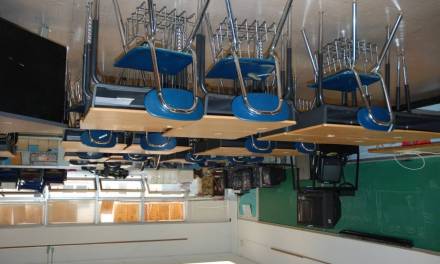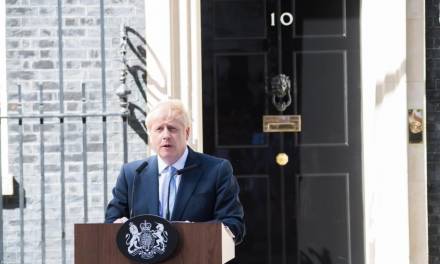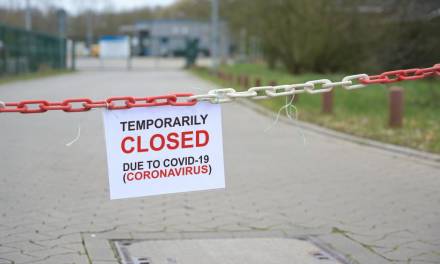The Coronavirus Act on Education remote learning legislation means schools have a legal duty to provide a remote learning solution for learners who cannot access school buildings due to Covid-19.
The Coronavirus Act: Provision of Remote Education (England) Temporary Continuity Direction regulation comes into effect this week.
Do you know how to be remote education ready? This blog post explains.
What does the Coronavirus Act say?
The Coronavirus Act impacts a wide range of different sanctions in order to restrict the spread of coronavirus.
In the section, ‘Provision of Remote Education (England) Temporary Continuity Direction‘, the law states:
When complying with this direction the responsible body must have regard to any guidance given by the Secretary of State for Education relating to the provision of remote education in accordance with this direction.
This means there is a direct legal responsibility for schools to ensure that ‘education is provided to registered pupils who do not attend school’.
Why has the law been changed and when will it be introduced?
The Department for Education state:
The coronavirus (Covid-19) pandemic is an unprecedented challenge for our school system, and the traditional approach to delivering education. The impact of the pandemic has necessitated many pupils being out of school, and this will continue to be the case for some pupils, in line with the legal requirements and guidance in place to tackle the virus. Schools have responded to this with a strong and proactive commitment to providing remote education, in challenging and uncertain circumstances.
The intention of this Direction is to provide legal certainty for all involved in the education sector, including parents, teachers and schools themselves. It makes clear that schools have a legal duty to provide remote education for state-funded, school-age children unable to attend school due to coronavirus (Covid-19). The Department for Education is providing further support for schools so that they are able to do so.
The Direction requires that where a class, group of pupils, or individual pupils need to self-isolate, or there are local or national restrictions requiring pupils to remain at home, schools are expected to provide immediate access to remote education. The expectations on the quality of remote education expected of schools remain those set out in the guidance for full opening published in July 2020.
The Direction was issued by the Secretary of State for Education on 30 September 2020 and will come into force on 22 October 2020.
Government guidance on remote education
The Government states:
Where a pupil is unable to attend school because they are complying with clinical or public health advice, we expect schools to immediately offer them access to remote education. Schools should monitor engagement with this activity as set out in the action for all schools and local authorities section.
What are remote education expectations?
The legal duty to provide a remote learning solution also places an expectation on quality learning.
Schools are expected to consider how to continue to improve the quality of their existing curriculum, for example through technology, and have a strong contingency plan in place for remote education provision by the end of September. This planning will be particularly important to support a scenario in which the logistical challenges of remote provision are greatest, for example where large numbers of pupils are required to remain at home.
This emphasis on quality remote learning means schools are expected to:
- Use a curriculum sequence that allows access to high-quality online and offline resources and teaching videos and that is linked to the school’s curriculum expectations
- Give access to high quality remote education resources
- Select the online tools that will be consistently used across the school in order to allow interaction, assessment and make sure staff are trained in their use
- Provide printed resources, such as textbooks and workbooks, for pupils who do not have suitable online access
- Recognise that younger pupils and some pupils with SEND may not be able to access remote education without adult support and so schools should work with families to deliver a broad and ambitious curriculum
The guidance also means that schools are expected to:
- Set assignments so that pupils have meaningful and ambitious work each day in a number of different subjects
- Teach a planned and well-sequenced curriculum so that knowledge and skills are built incrementally, with a good level of clarity about what is intended to be taught and practiced in each subject
- Provide frequent, clear explanations of new content, delivered by a teacher in the school through high-quality curriculum resources or videos
- Gauge how well pupils are progressing through the curriculum, using questions and other suitable tasks and set a clear expectation on how regularly teachers will check work
- Enable teachers to adjust the pace or difficulty of what is being taught in response to questions or assessments, including, where necessary, revising material or simplifying explanations to ensure pupils’ understanding
- Plan a programme that is of equivalent length to the core teaching pupils would receive in school, ideally including daily contact with teachers
Remote education should be high-quality and safe, and aligns closely with in-school provision. Schools and other settings continue to build their capability to educate pupils remotely, where this is needed. The Department for Education has therefore set key expectations for schools to meet:
- Teach an ambitious and broad curriculum in all subjects from the start of the autumn term, but make use of existing flexibilities to create time to cover the most important missed content. Up to and including key stage 3, prioritisation within subjects of the most important components for progression is likely to be more effective than removing subjects, which pupils may struggle to pick up again later. In particular, schools may consider how all subjects can contribute to the filling of gaps in core knowledge, for example through an emphasis on reading.
- Aim to return to the school’s normal curriculum in all subjects by summer term 2021. Substantial modification to the curriculum may be needed at the start of the year, so teaching time should be prioritised to address significant gaps in pupils’ knowledge with the aim of returning to the school’s normal curriculum content by no later than summer term 2021.
- Plan on the basis of the educational needs of pupils. Curriculum planning should be informed by an assessment of pupils’ starting points and addressing the gaps in their knowledge and skills, in particular making effective use of regular formative assessment (for example, quizzes, observing pupils in class, talking to pupils to assess understanding, scrutiny of pupils’ work) while avoiding the introduction of unnecessary tracking systems.
- Develop remote education so that it is integrated into school curriculum planning. Remote education may need to be an essential component in the delivery of the school curriculum for some pupils, alongside classroom teaching, or in the case of a local lockdown.
Guidance for remote education
There is currently a four tier system in place to decide the level of remote education in schools. These are to coincide with the level of lockdown in the local area on the Government’s “traffic light” system.
Tier 1: Fully open to all pupils full-time, with face coverings required in corridors and communal areas for pupils in year 7 and above.
Tier 2: Secondary schools and colleges in a restricted area to use rotas to help break chains of transmission of coronavirus. Primary schools, alternative provision and special schools remain open to all pupils.
Tier 3: Secondary schools to only allow full-time on -site provision to vulnerable children, the children of critical workers and selected year groups (to be identified by the Department for Education). Remote education is to be provided to all other pupils. Primary schools, alternative provision and special schools remain open to all pupils.
Tier 4: All mainstream schools only allow full-time on-site provision to priority groups. Remote education provided to all other pupils. Alternative provision and special schools remain open to all pupils.
Coronavirus Act for Education: blended learning guidance from the National Education Union
Source: United Learning
According to the National Education Union (NEU), senior leaders within the school need to consider the following:
- Where possible, distance learning should follow the curriculum being taught in school. Leaders should think about the different levels of provision needed for different groups of pupils under different circumstances.
- Pupils learning from home, no matter via which method, will have very different experiences of education compared with being at school or college. Leaders and teachers should consider how to vary the activities and contact to maximise engagement and access to learning.
- Leaders should make arrangements to ensure pupils who are at home a lot of the time have regular contact with teachers.
- Leaders should recognise that the assessment of learning gaps and pupils’ readiness to learn from home will be different for individual students. Such assessment will be time-intensive and add to teacher workload. Any additional workload must be compensated for by reductions elsewhere.
- Many learners with SEND are finding the transitions in and out of school very challenging and extra communication with parents may be needed. Leaders should recognise that SENCOs will need additional release time and resources to provide the necessary support for pupils with SEND and pupils with emotional or social needs.
Teaching remotely is not the job teachers trained for or are used to: Training is needed to fully benefit from this approach.
Teachers are expected to:
- Agree policies and practices relevant to each scenario. This might include a clear idea of how many lessons, subjects or tasks should be made available each day; how frequently feedback should be given on pupil work; and what balance should be between teacher input (including presentations, explanations), other resources (including film, textbook, external resources) and pupil tasks. Leaders should share these expectations with parents and pupils as appropriate.
- Have clear policies and practices with regard to the safeguarding aspects of any remote teaching needed.
- Ensure that they have a list of pupils who will struggle to access technology, Wi-Fi, or quiet space for learning, and develop contingency plans to support these needs.
- Recognise that some pupils need to share laptops/computers at home (because of siblings or parents also working at home). Many have to undertake their lessons as and when they can during the day, not at the specific lesson time.
- Support them to provide the best learning opportunities possible for children and young people, whilst being protected from the physical and mental health impact of over-work.
- Nominate remote learning leaders, who support and promote good practice for remote learning provision, and review whole-school or college practices.
- Consider how they best make use of teachers who are working from home, for example assigning some remote teaching, developing or recording presentations etc, where appropriate to the twacher’s subject and/or phase teaching experience.
How EDClass can help
EDClass is your one-stop shop for providing remote learning.
You can ensure your school stays within the law for the provision of online learning, with access to 12,000+ lessons and live support all set up and ready to go.
EDClass is specifically built for this situation and with specialist teachers already on hand, your teaching staff do not need to learn new teaching techniques. They do not need to prepare and upload lesson content – and they do not need to assess, mark and give feedback because our sophisticated digital platform can do it all on your behalf.
The system is fully safeguarded with facilities including eyes-on learning. This means that with a webcam enabled, any issues on camera can be picked up by a specialist trained member of staff. All EDClass safeguarding and wellbeing staff are enhanced DBS checked.
We have over 12 years experience in providing a recognised alternative provision for students in isolation, exclusion or unable to attend mainstream classrooms due to other means.
Read our testimonials here.
Read our Ofsted here.
Click here to try a free trial.
For more information call 01909 568338, or email mail@edclass.com.











